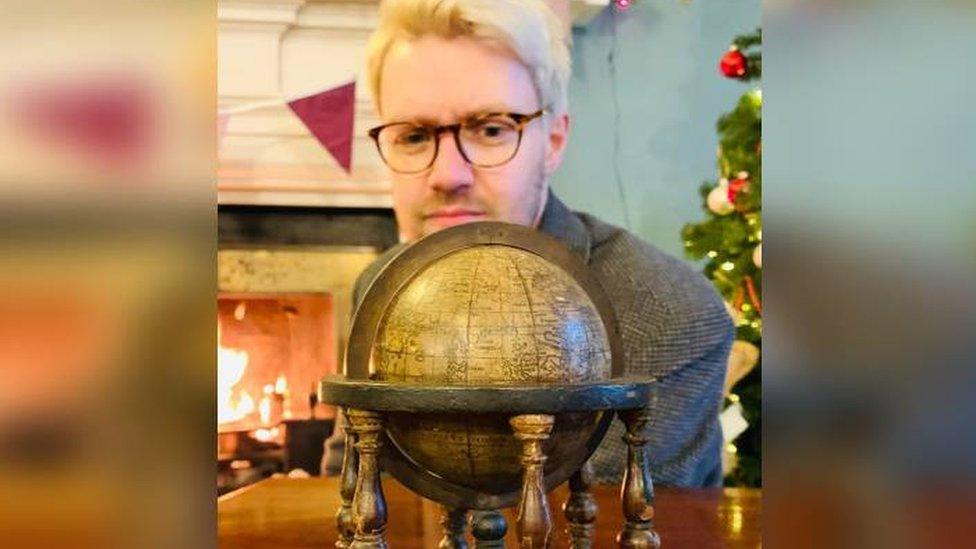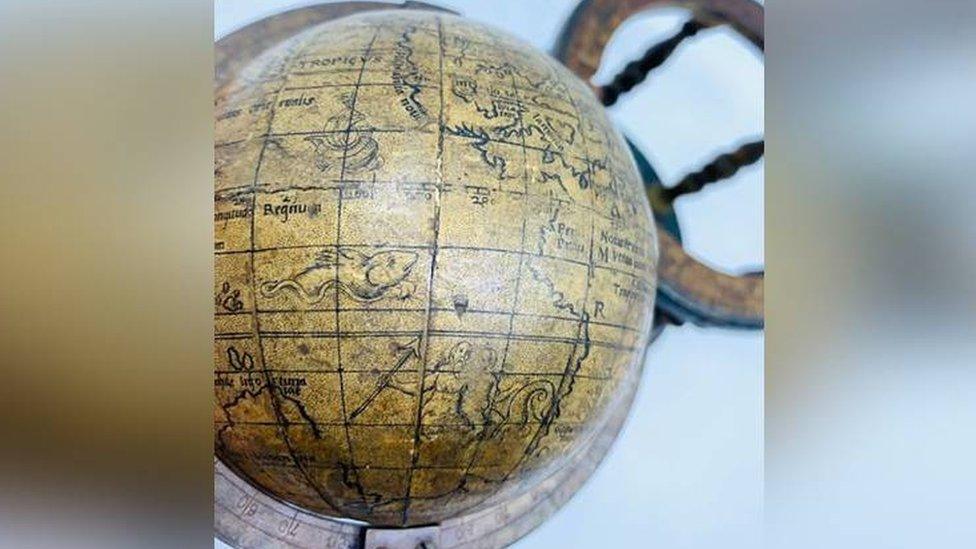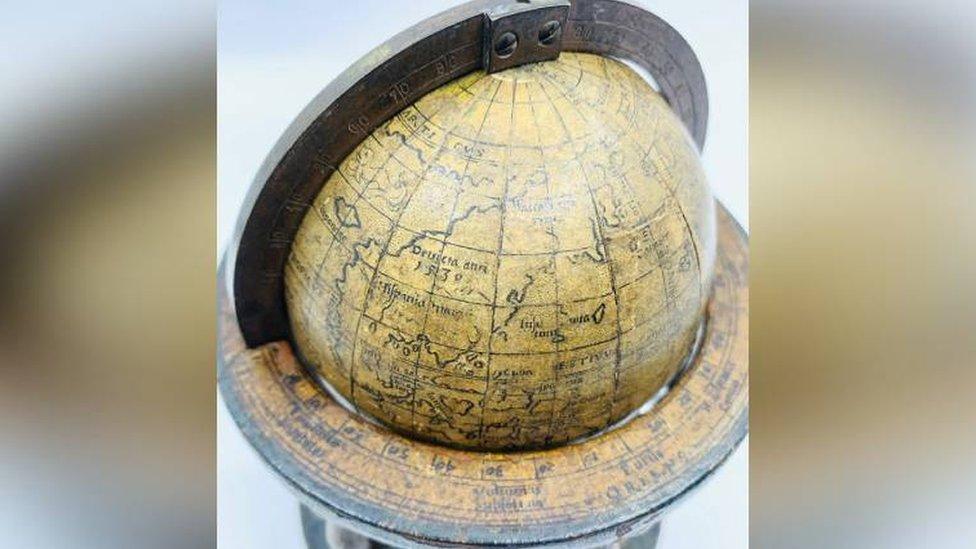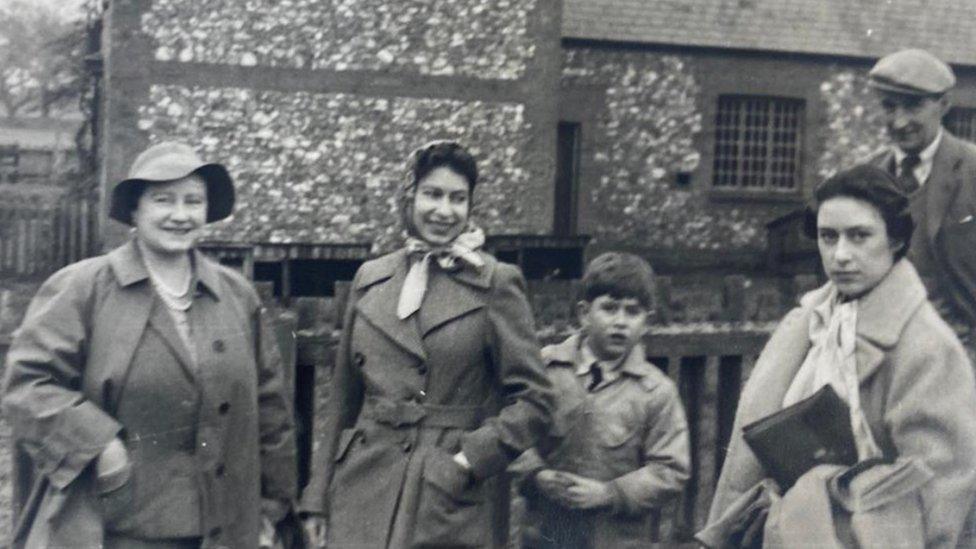'Priceless' 16th Century globe to be sold at auction
- Published

The carved wood and paper sphere, pictured with Jim Spencer, dates to the 1550s or 1560s
A "priceless" globe dating back to the 16th Century is expected to fetch tens of thousands of pounds at auction.
The carved wood and paper sphere, which dates to the 1550s or 1560s, was brought by its owner from north Wales to be valued by Hansons Auctioneers.
Australia is missing from the artefact as no European knew it existed.
The globe was originally owned by Maj Edward Croft-Murray, former keeper of prints and drawings at the British Museum.
He was one of the so-called "Monuments Men" who worked to save cultural artefacts during World War Two.
The globe's mapped sides, made from engraved paper, feature sea monsters while North America is dubbed "Devicta ann 1530".
That is Latin for: "Conquered in 1530."
Hansons' Jim Spencer said the piece was thought to be the work of French physicist and geographer Francois Demongenet, or built from one of his designs.
"One specialist I spoke to said 16th Century globes are nigh on impossible to come across," he said.
"The leading galleries were as keen as mustard and said it's absolutely right for the period.
"In terms of value, the general consensus is that it's a complete unknown and should be very exciting to watch.
"Our globe looks like it could be the earliest ever offered at auction."

The globe was once owned by Maj Edward Croft-Murray, one of the so-called "Monuments Men"
About the time it was made, Edward VI died.
His death was followed by the nine-day reign of Lady Jane Grey, Mary I, then her sister Elizabeth I.
Mr Spencer said: "The age of our globe firmly places it among the rarest in existence."
It will go under the hammer at an online auction on Friday. It has a guide price of £20,000 to £30,000 but Mr Spencer is expecting it go for more.
"The sky's the limit," he said. "To me, it feels priceless."
"The sheer age of the globe is mind-blowing.
"People would've been wearing ruffs and codpieces when they first handled this globe in Elizabethan England.

Australia is missing from the artefact as no European knew it existed
"It's amazing to think of all the historical events this delicate little globe has survived."
He said the globe felt to him like a museum piece.
The oldest known globe in the world is the 1492 Erdapfel.

THE GRANDEST OF DESIGNS: The man who took on a mansion
EXPLORE WALES : The very best of welsh nature and exploration

Related topics
- Published13 May 2021

- Published7 December 2021

- Published12 September 2021
